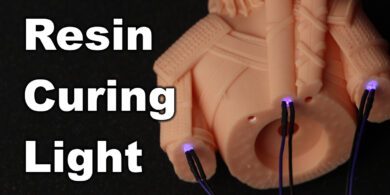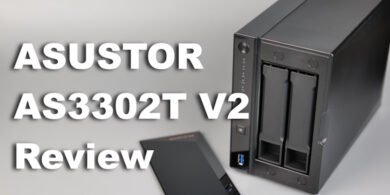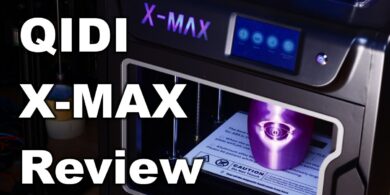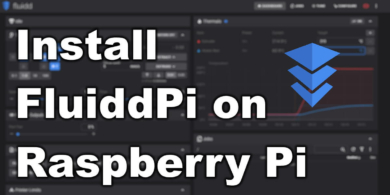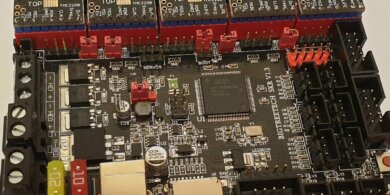ENERGETIC Double-Sided PEI Sheet Review
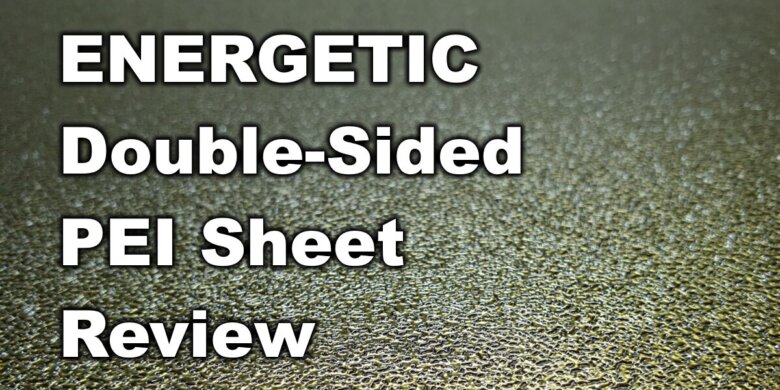
I ordered an Energetic double-sided PEI sheet from AliExpress a few weeks ago which includes a textured PEI top and a smooth PEI bottom. After printing more than 600 face shield frames, my old Energetic PEI sheet has seen some damage, so it was time for a replacement.
In this article I will review the new double-sided PEI sheet from ENERGETIC and see if it’s worth buying.
Replacing the old ENERGETIC PEI Sheet
As previously mentioned, the old Energetic PEI Sheet was damaged and I needed to replace it.
Because of some small faults with the printer, and a few bad moves from my side, I managed to damage the PEI badly with the printer nozzle. The battle scars can be seen below.
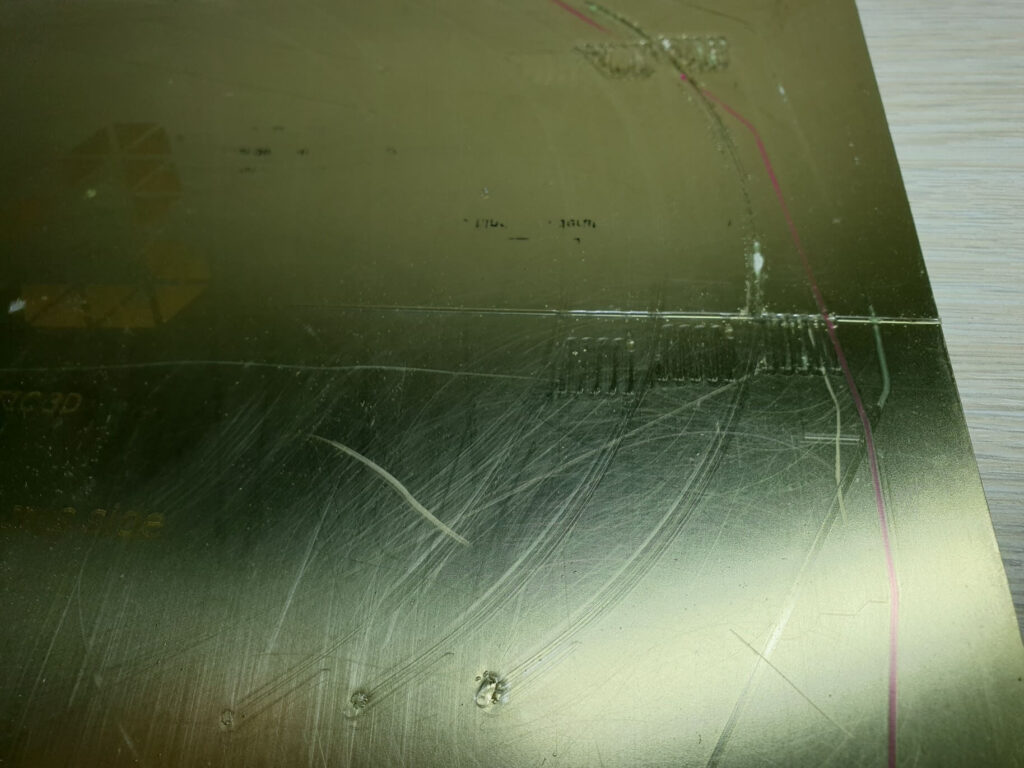
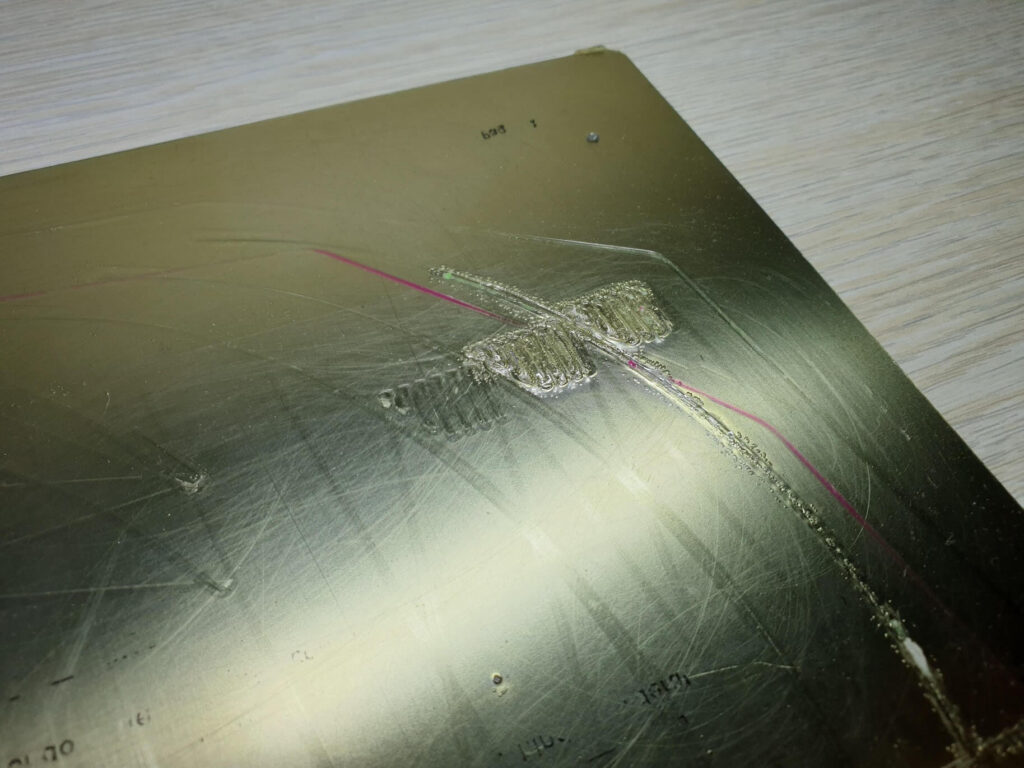
Removing the old PEI surface from the spring-steel sheet is a real pain. I did this once in the past and I am not planning to do this again. I spent a few hours removing glue and pieces of PEI so considering the amount of work needed for this, I prefer to just replace it.
Packaging
The upgraded Energetic PEI sheet comes wrapped with cardboard protection in a bubble envelope. It’s not packaged as well as the Trianglelab PEI sheet I reviewed a while ago, but it gets the job done.
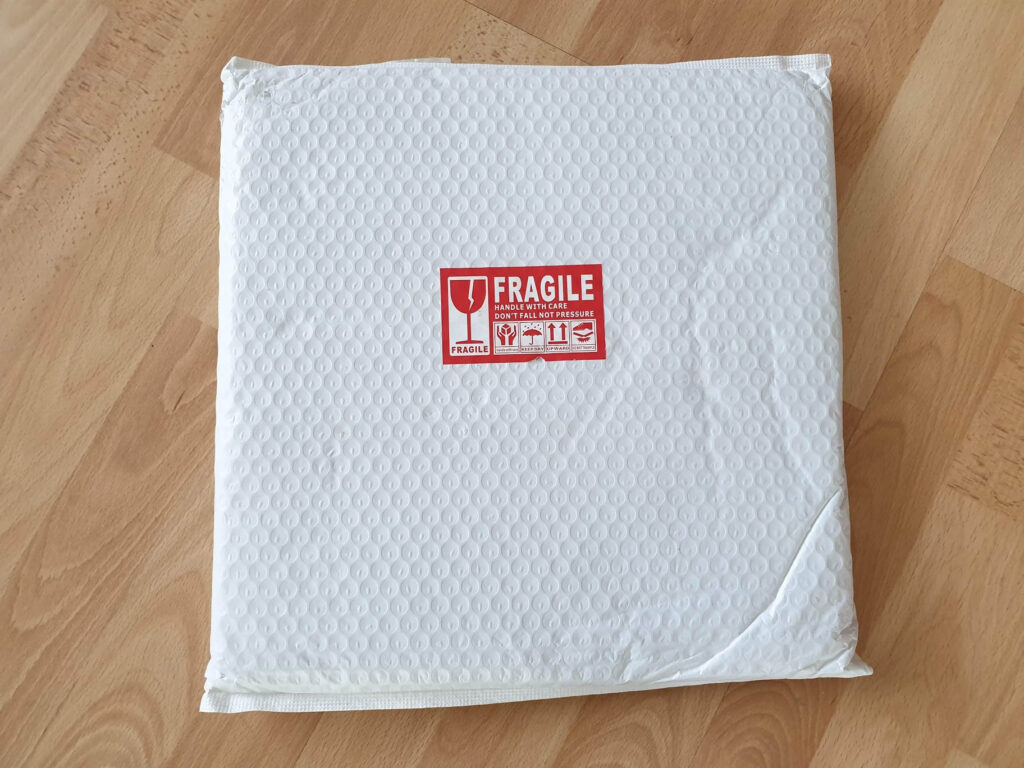
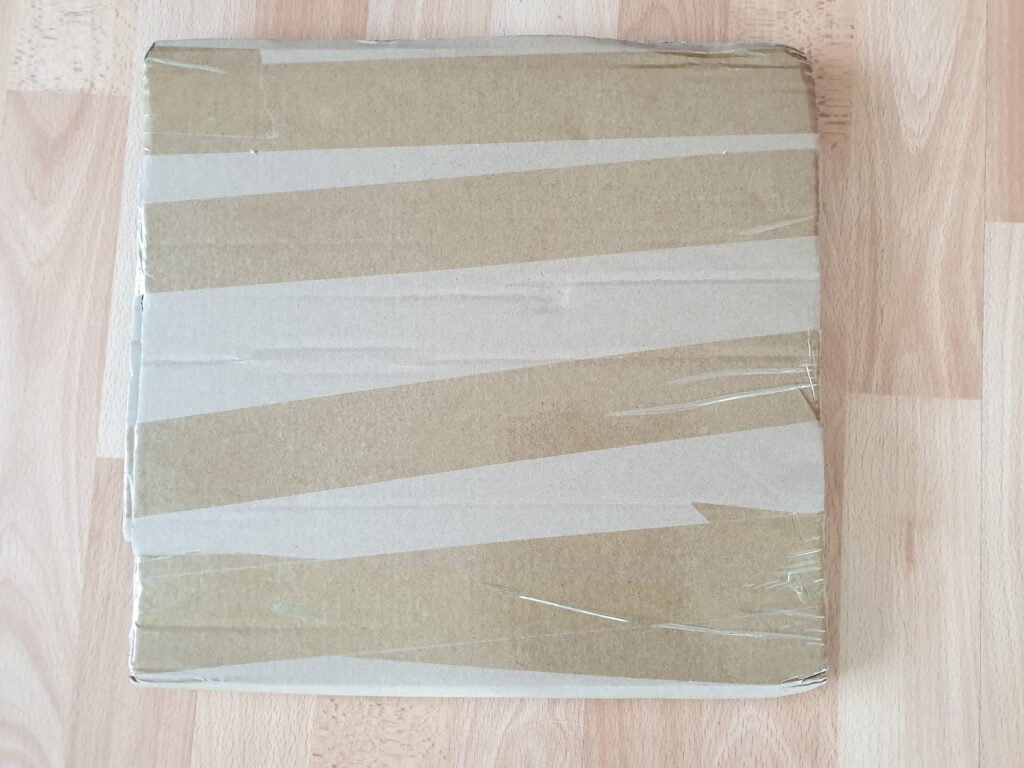
The package arrived without any faults on the PEI sheet.
Unfortunately, the shipping took more than 2 months but this is somewhat understandable. The Covid 19 has made all shipments really slow, so I can’t really complain.
ENERGETIC Double-Sided PEI Sheet
In order to properly test the Energetic double-sided PEI sheet, I installed it on the Sapphire Plus.
Because I use a limit switch for Z endstop, hopefully I won’t damage the PEI surface too soon.
I used the old magnetic surface I had installed, and it works just as well.
Textured PEI side
The Energetic textured PEI is currently my favorite surface. It’s really different from the one from Trianglelab. The surface has a sandpaper feeling which helps with print adhesion.
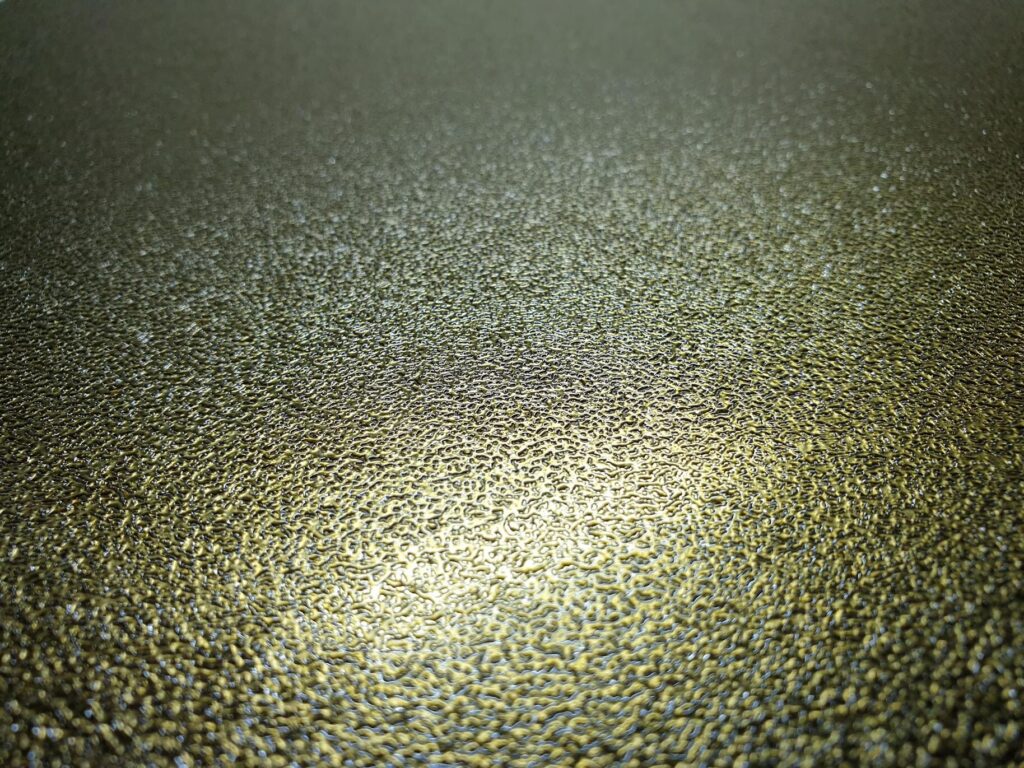
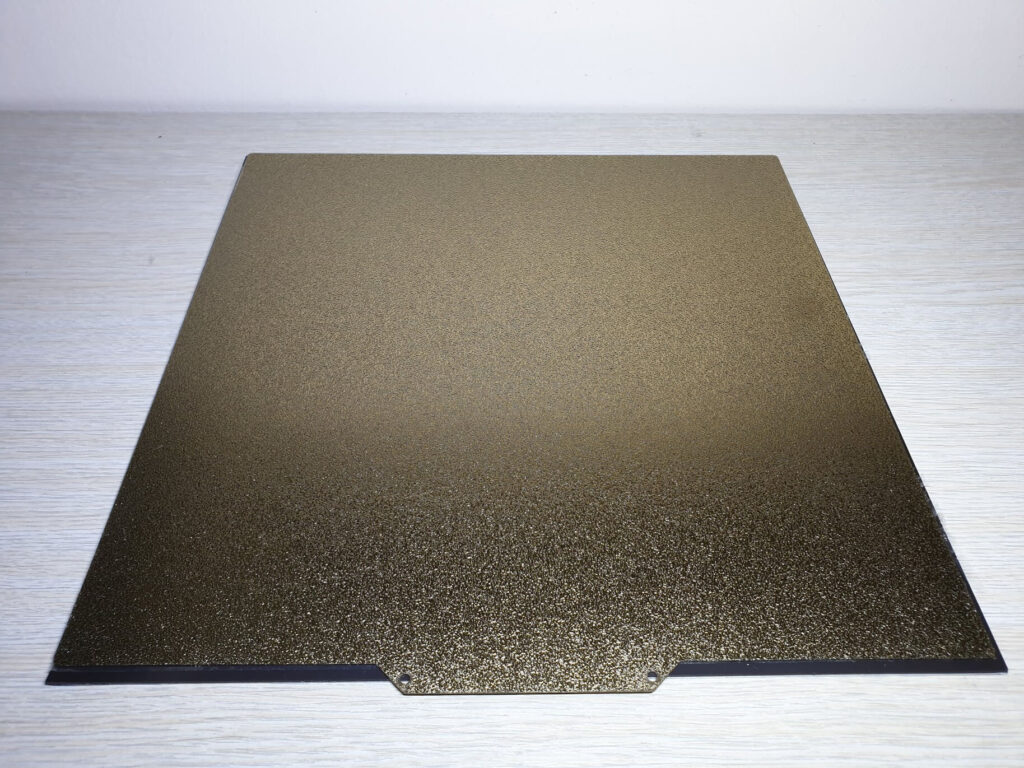
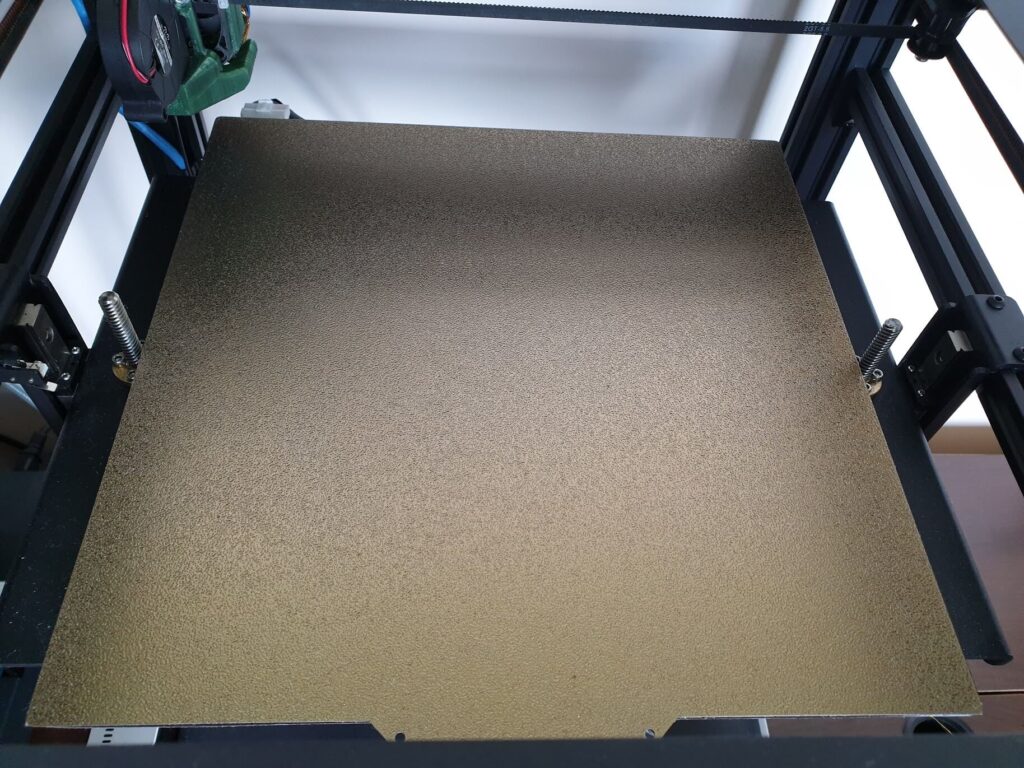
The PEI is perfectly cut around the corners and I can’t see any kind of defect on it.
I usually print on the textured PEI surface when I want to have the same texture on the print.
It’s great for hiding the first layer lines, and the finished print looks like a single textured piece of plastic.
Smooth PEI side
The smooth side from the Energetic double-sided PEI sheet is different from the “1st generation”. On my old smooth PEI sheet, the surface was really smooth and the contact surface on the prints looked close to glass.
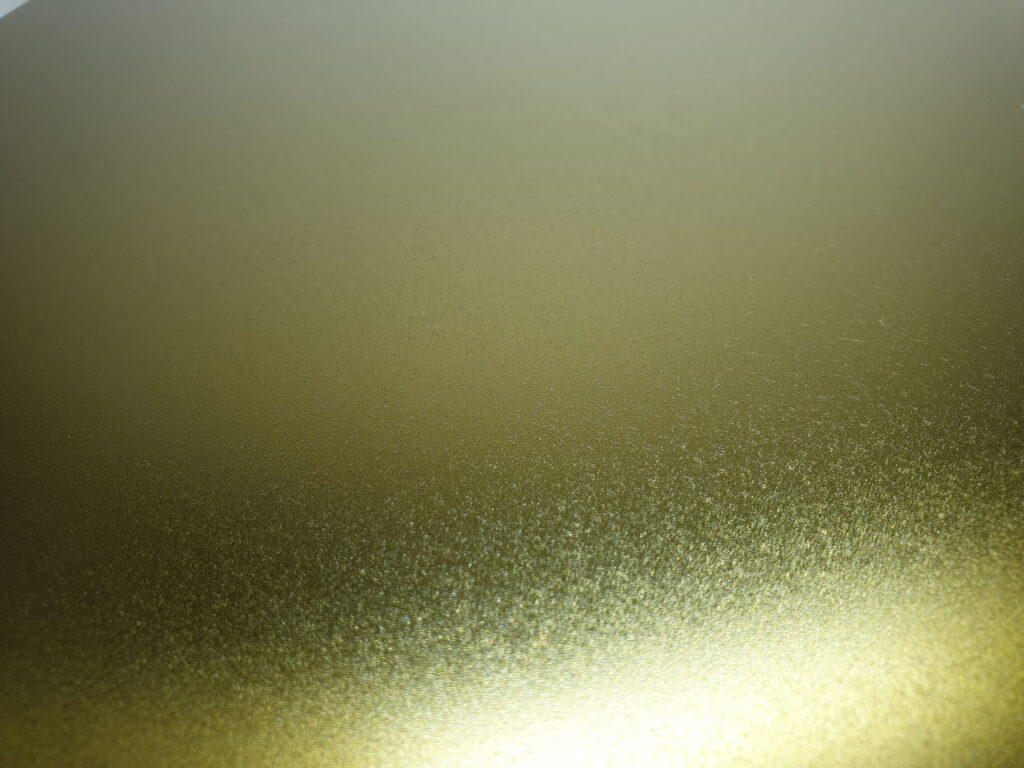
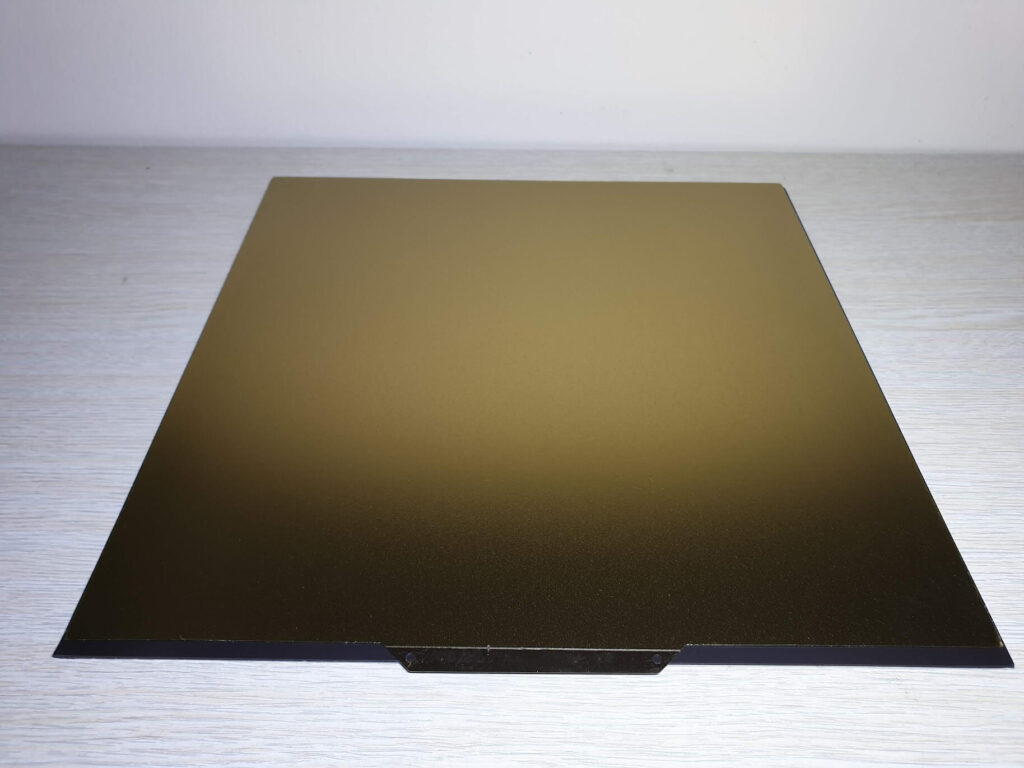
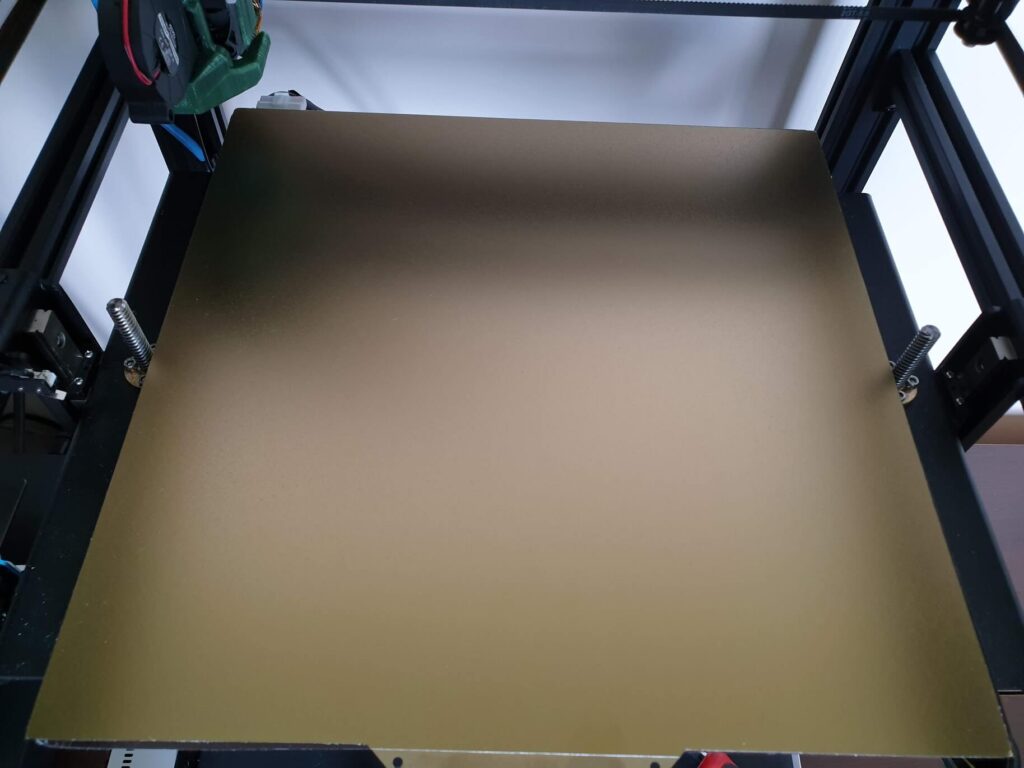
On the new smooth PEI sheet from Energetic, there’s a slight same sandpaper feeling.
To compare, if the textured side feels like a 500-grit sandpaper, the smooth side feels like 1500-grit.
I am sure this change was done in order to further improve the adhesion when printing.
Prerequisites before starting the tests
The AliExpress seller tells us that you can print PLA, PETG and TPU without heating the build plate. In order to confirm this, I did a few test prints with to see if this is true.

The test model is a 50×50 mm square with 5 layers at 0.2 mm each.
Temperatures used:
The part cooling fan is set to start from layer 3 at 100% for PLA, 30% for PETG and 100% for TPU.
Testing the ENERGETIC textured PEI side
PLA on cold textured PEI
My first test was printing PLA on the cold textured PEI side. In the first image, part cooling fan was off, and on the second image the fan was on (100% from layer 3)
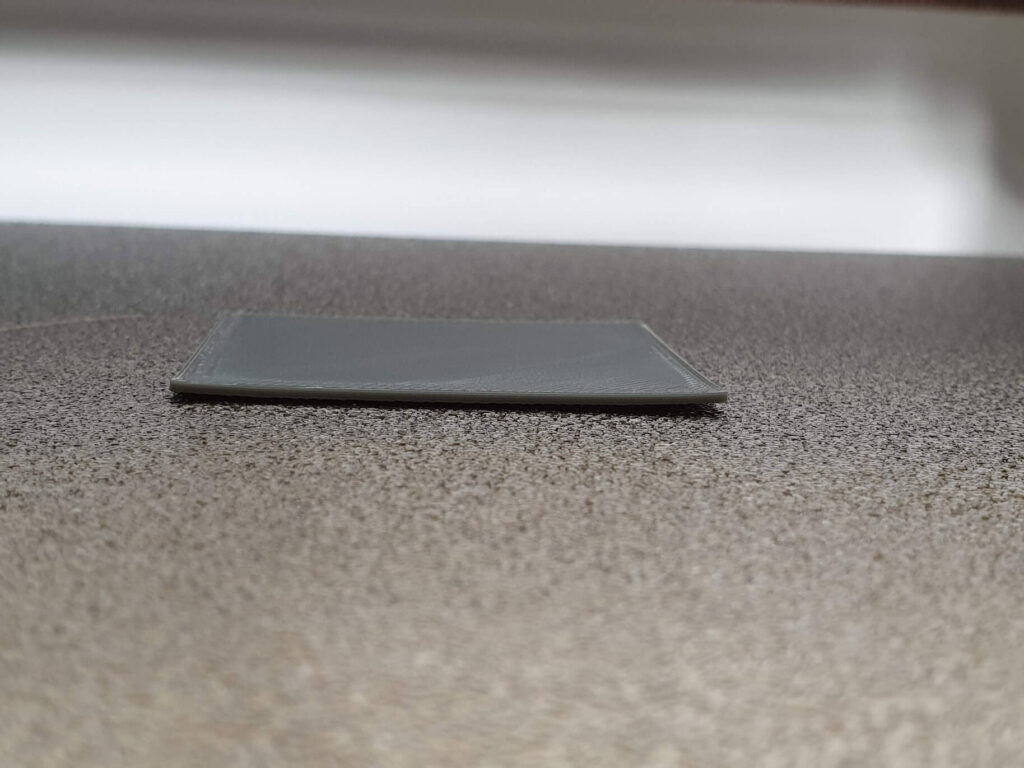

After a few tries, I can safely conclude that PLA cannot be printed without a heated bed. The corners start to lift after a few layers, even if no part cooling fan is used. I would not recommend printing PLA without heating the build plate.
PETG on cold textured PEI
Next test was done with PETG. This time, the corners lifted so much, that I needed to stop the print before finishing. In the first image, part cooling fan was off, and on the second image the fan was on (30% from layer 3).
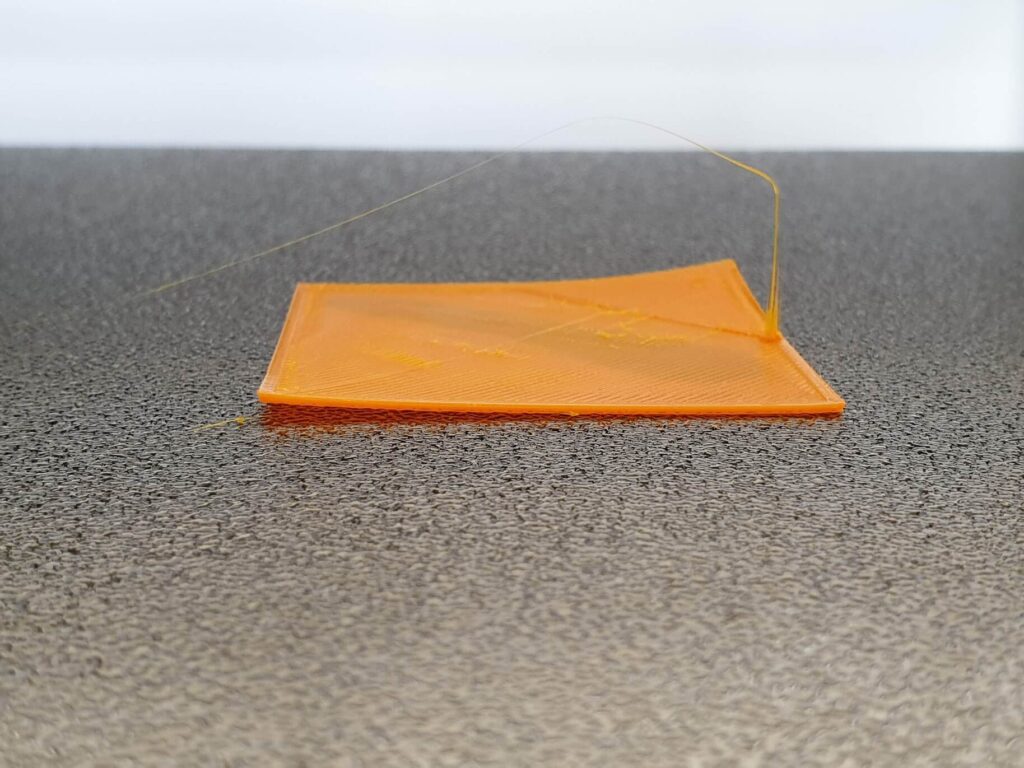
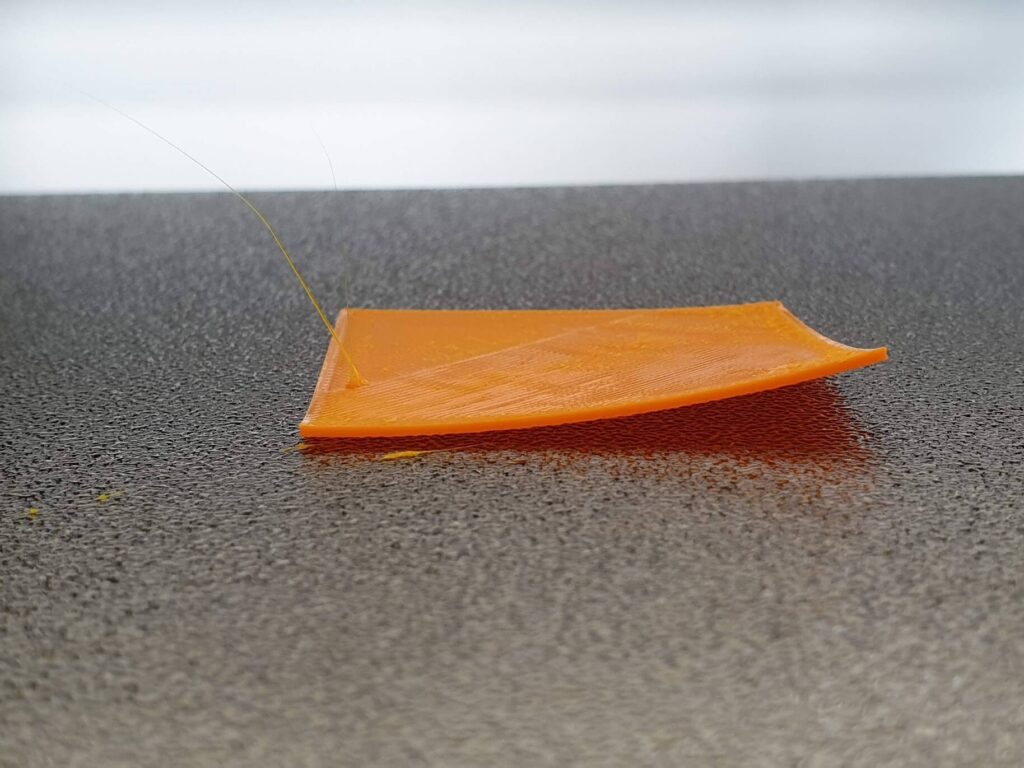
Just like with PLA, there’s no way you can print PETG on the textured PEI with a cold build plate. The corners easily lift off from the bed.
TPU on cold textured PEI
Fortunately, TPU doesn’t seem to care that the textured PEI sheet is not heated. It stuck really well on the textured PEI surface, and I was able to easily remove it when finished. In the first image, part cooling fan was off, and on the second image the fan was on (100% from layer 3).
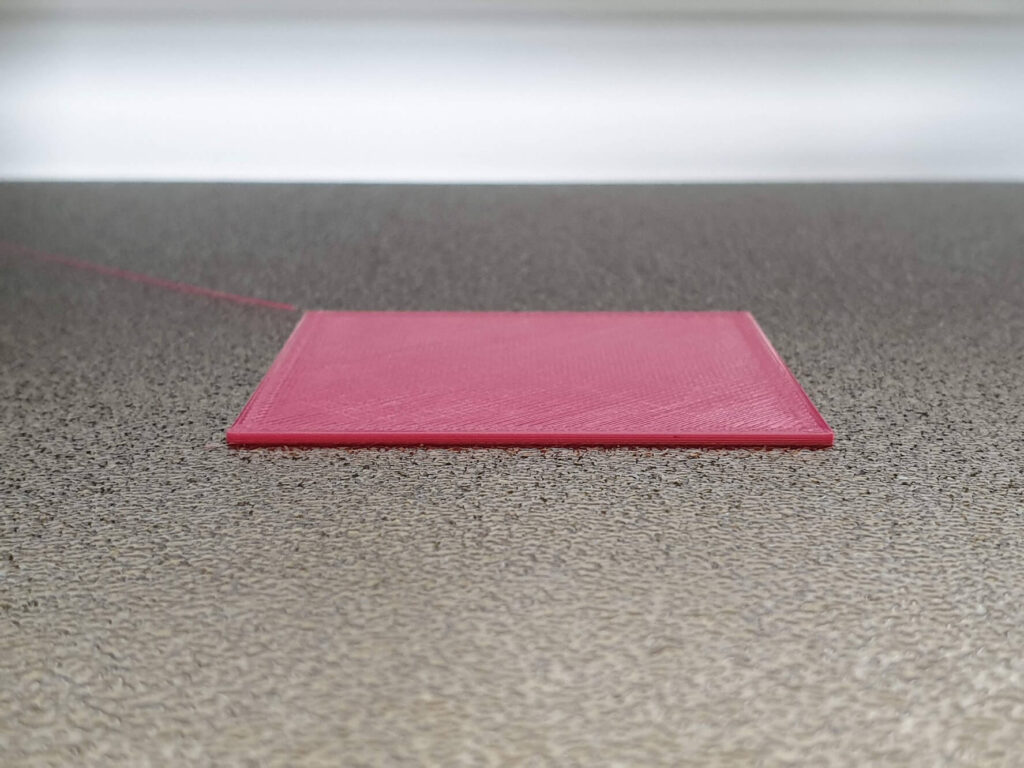
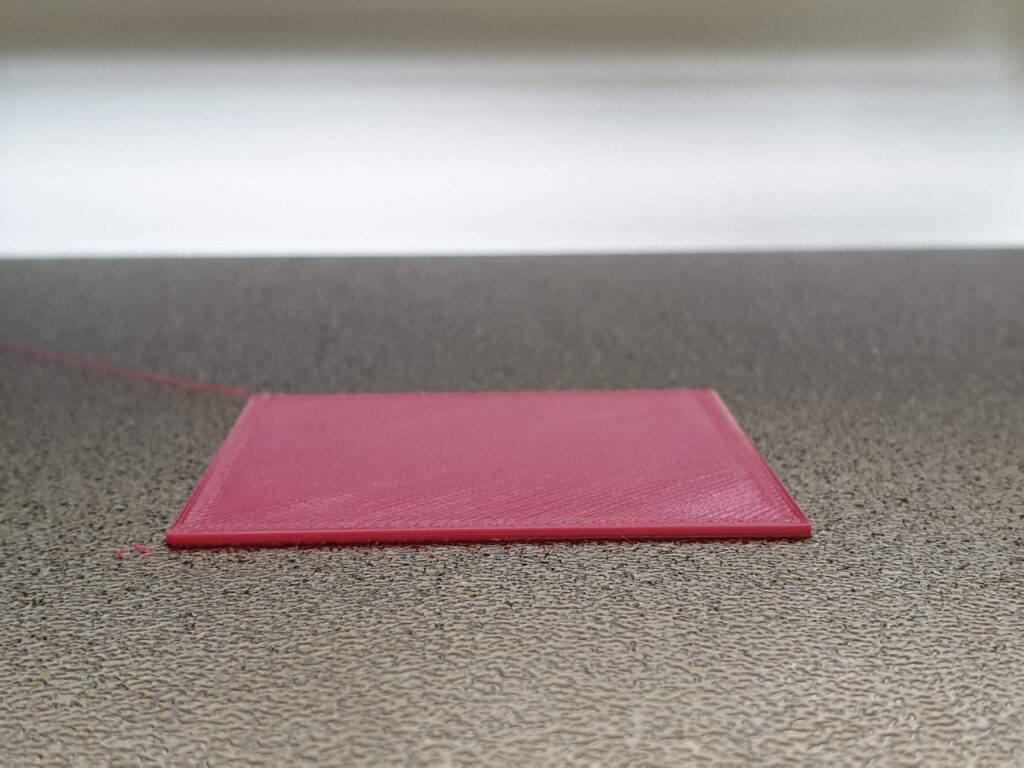
Even with the fan on, TPU works well and you can print it without having to worry about heating the build plate.
Testing the ENERGETIC smooth PEI side
PLA on cold smooth PEI
Printing PLA on the smooth PEI without any heat worked better than expected. In the first image, part cooling fan was off, and on the second image the fan was on (100% from layer 3).
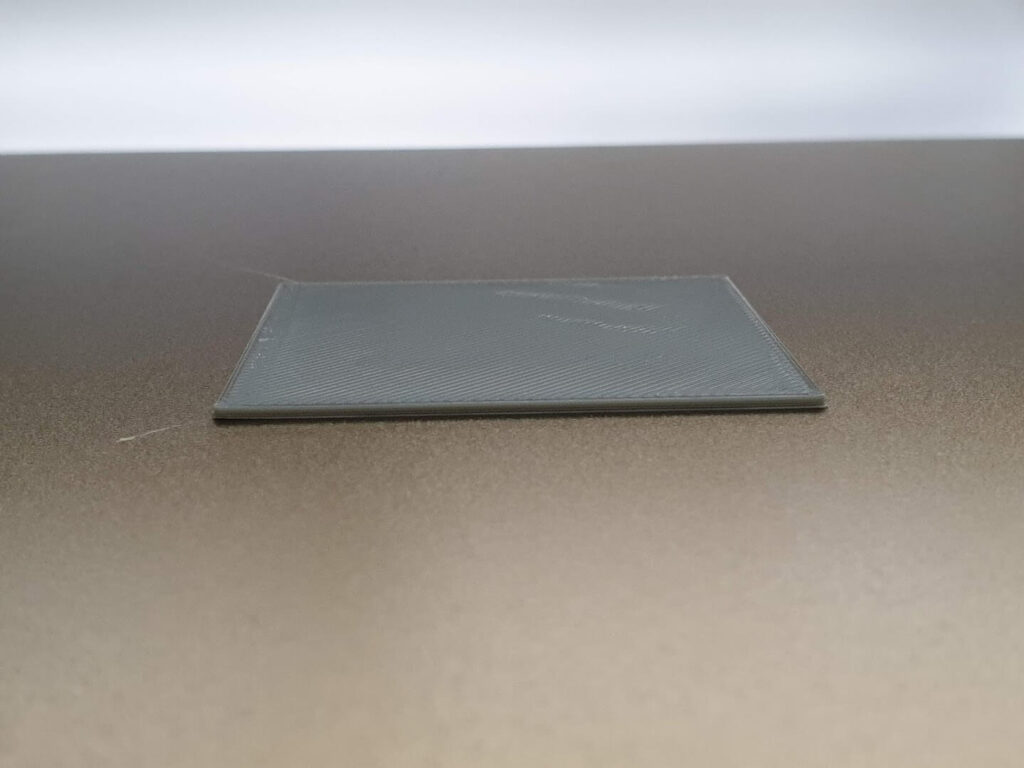
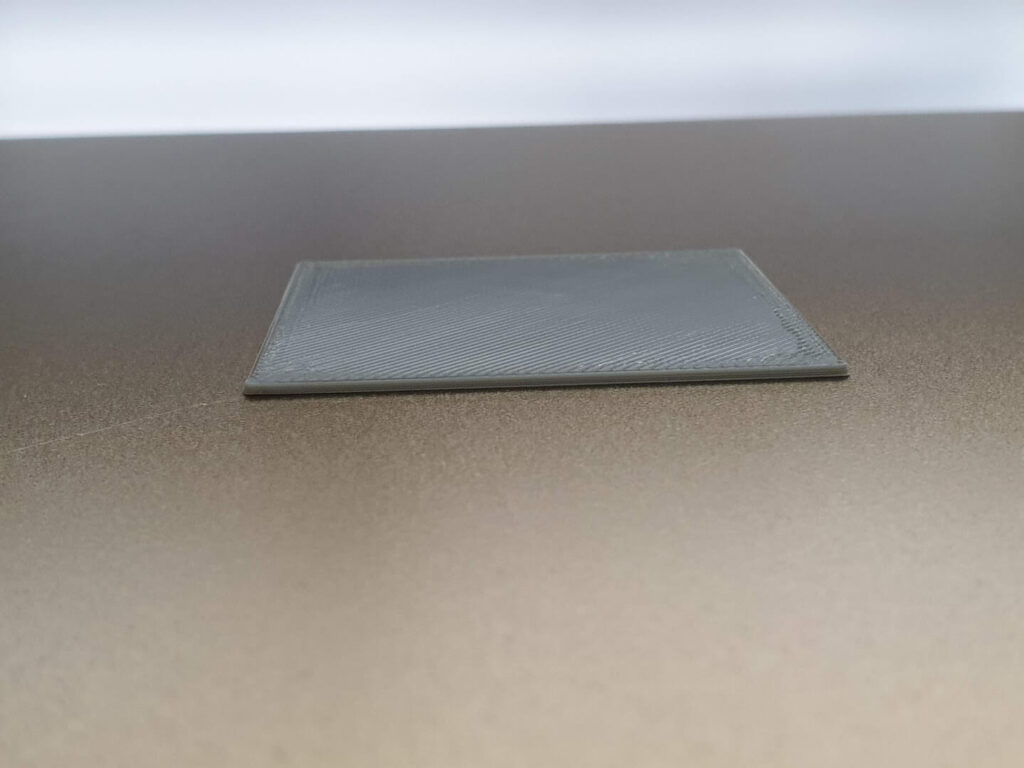
No sign of warping for PLA, and the adhesion is good.
PETG on cold smooth PEI
I was not expecting this, but it seems that you can easily print PETG on the smooth PEI side without much trouble. In the first image, part cooling fan was off, and on the second image the fan was on (30% from layer 3).
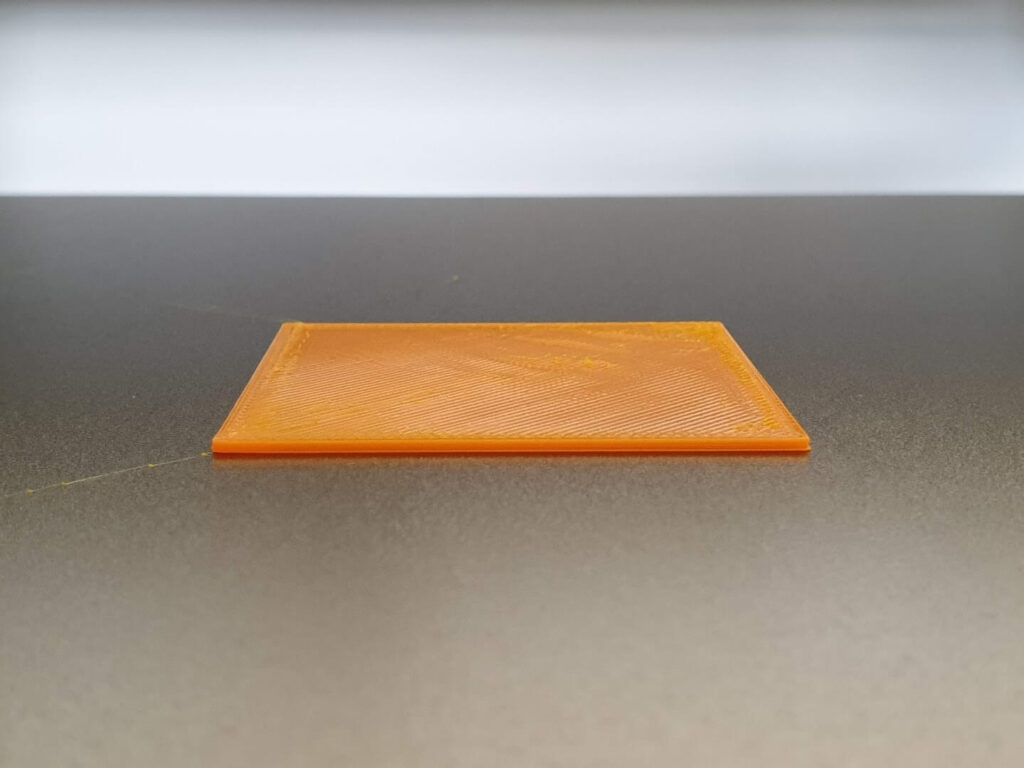
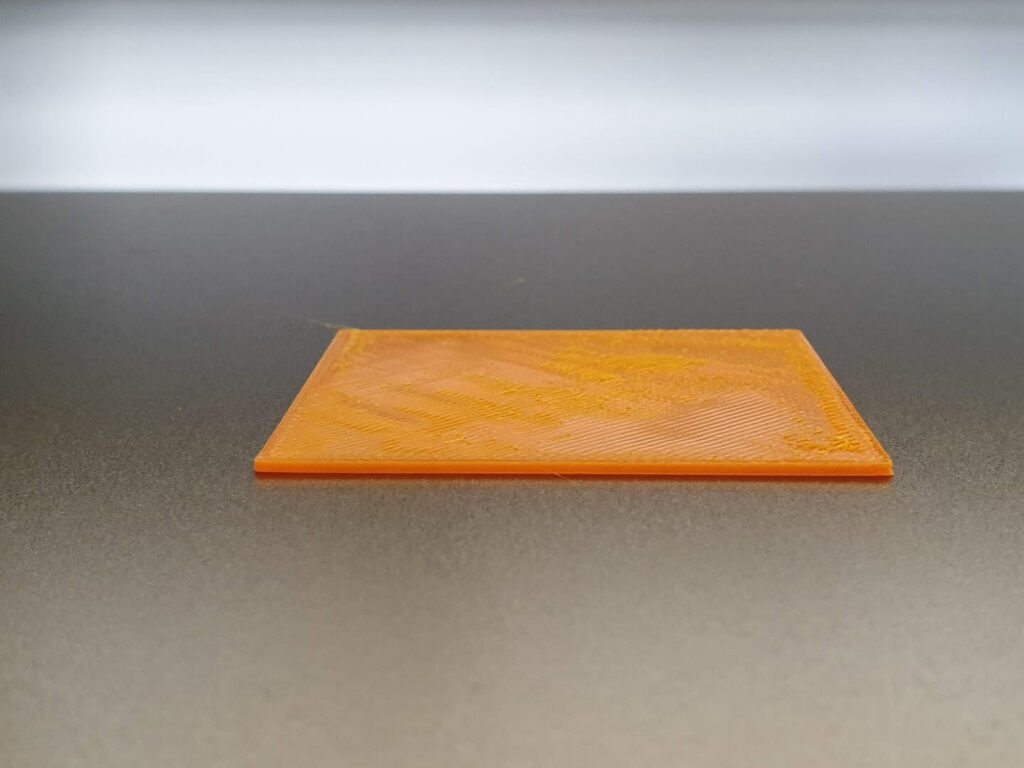
Even though the PETG prints were fine on the smooth PEI side, I would not try my luck. I recommend you always use a heated bed when printing PETG, just to make sure there are no surprises during printing.
TPU on cold smooth PEI
Just like on the textured side, TPU prints great on the smooth PEI side and there’s no need to heat up the build plate. In the first image, part cooling fan was off, and on the second image the fan was on (100% from layer 3).
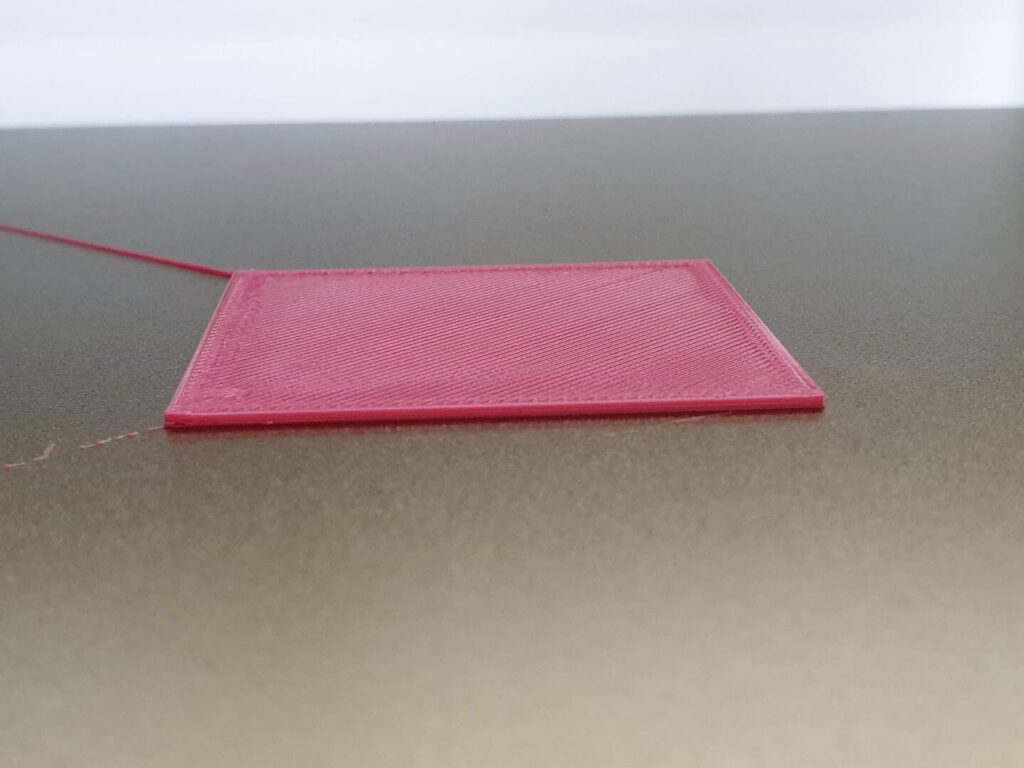
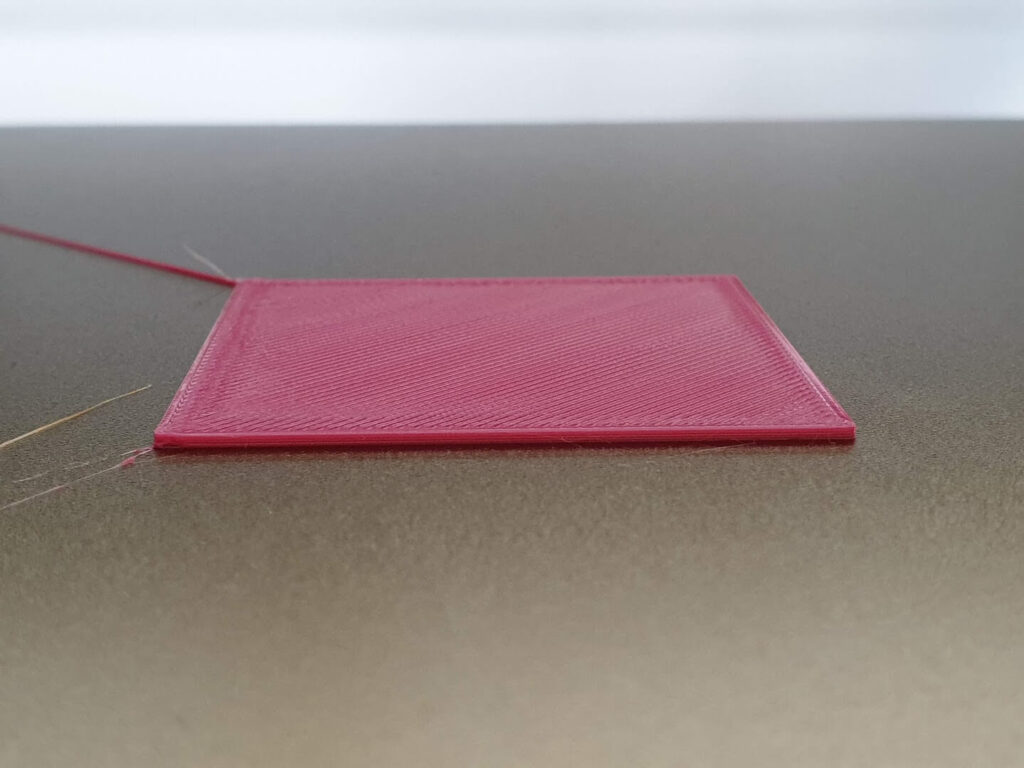
Where are the tests with a heated bed?
I already did a few prints with all three materials (PLA, PETG and TPU) with a heated bed. The adhesion is impeccable on both sides, and I would not want to bore you with another round of images. It’s not fun going through a wall of perfect squares.
The important thing to note is that the Energetic PEI sheet works without any kind of issues when heated. All the materials have excellent adhesion, and I did not encounter any kind of issue during printing.
I also noticed that you can lower the temperatures with about 10-15 degrees without any downsides. I usually print PLA with 60C on the hotbed, but with the textured PEI sheet at 45C there’s no difference in adhesion.
The same for PETG. From the usual 70C, I lowered it to 55C and the few prints I did finished without any issues.
You can’t really go wrong with it when using a heated bed and this double-sided PEI sheet.
Just make sure you clean it with IPA regularly.
Textured PEI vs Smooth PEI – Which one looks better?
I think this choice is based on user preference. In my case, I love the finish from the textured PEI side and I use it most of the time. But when I do a big print and I need to make sure adhesion is the best, then I flip it and use the smooth PEI side.
In the images below, you can see the differences between the textured PEI finish and the smooth PEI. My bed was not perfectly leveled, but you get the point.
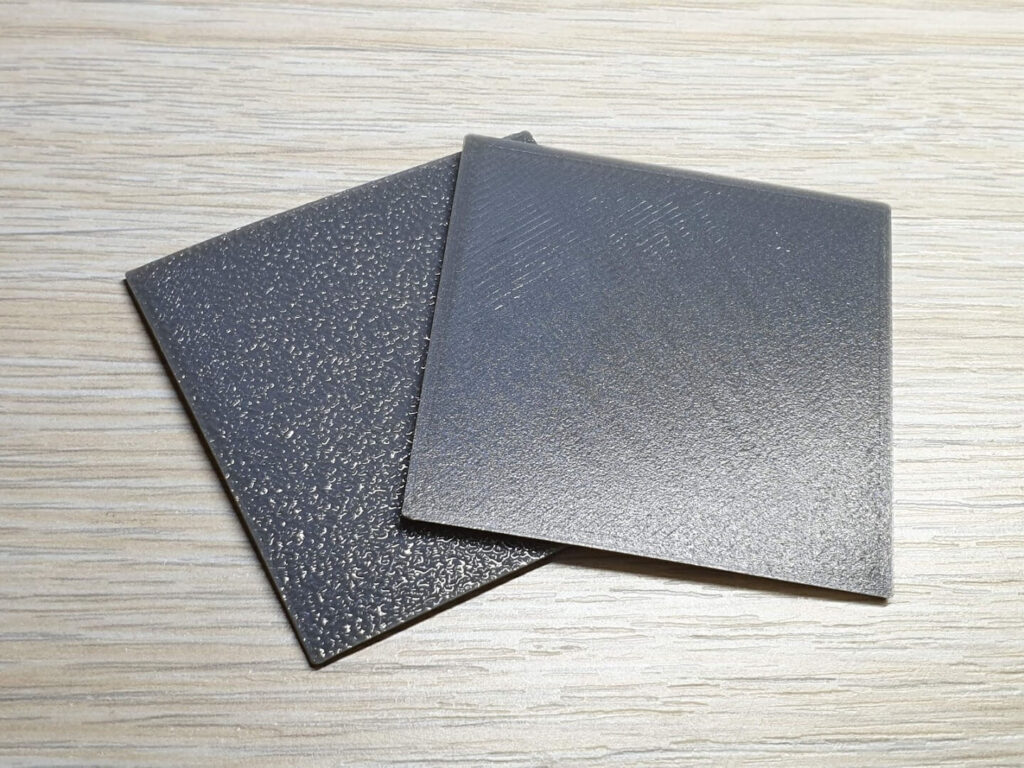
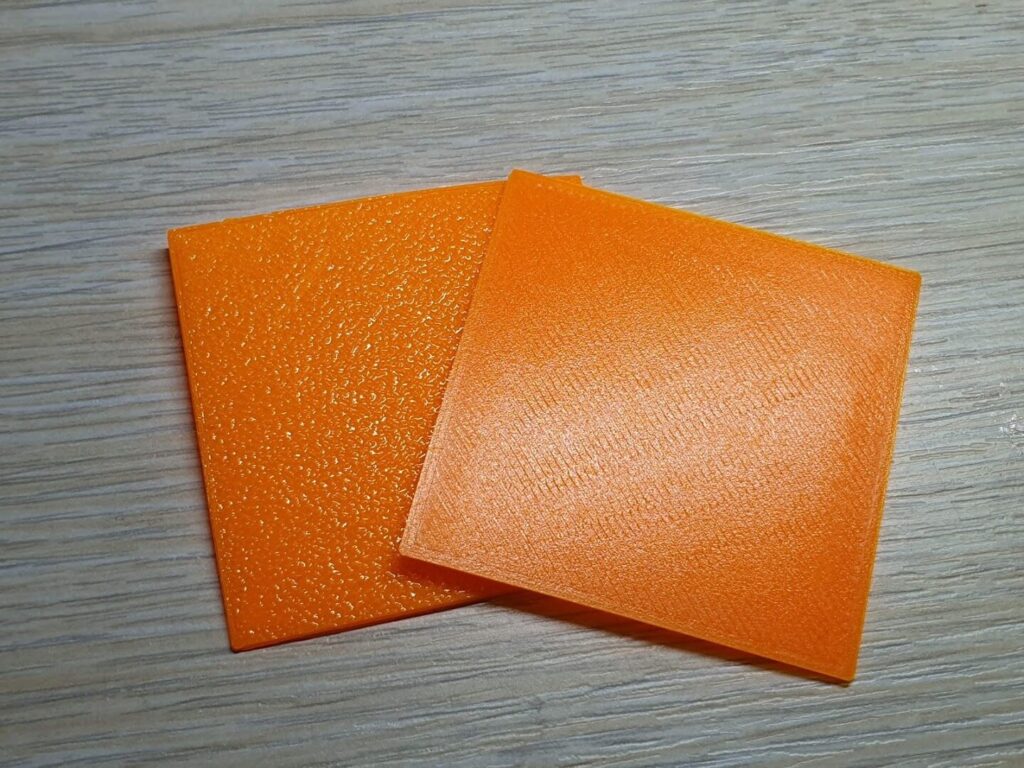
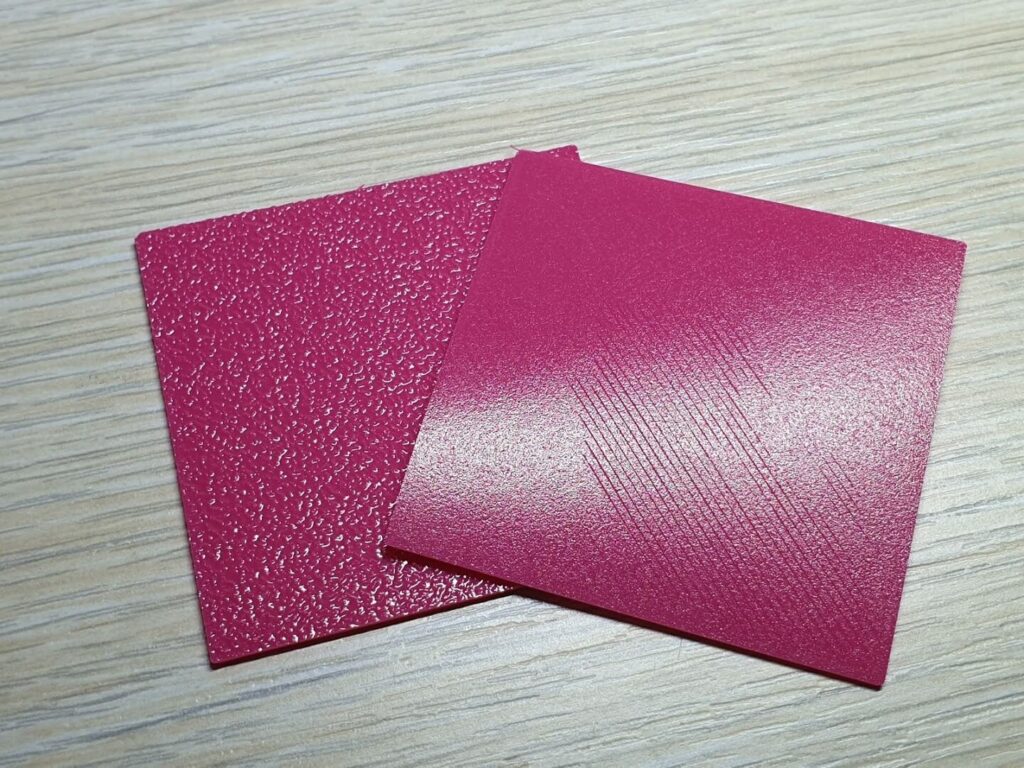
Is the ENERGETIC double-sided PEI sheet worth it?
The Energetic double-sided PEI sheet is great even though the results are mixed.
PLA, PETG and TPU stick great and they can be easily removed when the print is finished, but for reliable printing, it’s always recommended to use a heated bed (except for TPU).
Unfortunately, the seller’s information is not perfectly accurate. He overpromises and underdelivers with his description. Based on his description and my tests, the textured PEI side should be fake (but it is not).
To be safe, I’d say you should always take AliExpress descriptions with a grain of salt like I do and you will be fine.
I was lucky enough to buy the 310×310 double-sided PEI sheet during a promotion for only 34$, including the magnetic base. I’m really happy with my purchase considering the amount paid.
Currently, the price is a bit higher, but I’d say it’s still wort it. You get an excellent quality double-sided PEI sheet that will work for any printing scenario, as long as you use a heated bed.
If you really want to print with no heat on the bed, then you should get a surface like the one used on Creality printers.
The Energetic double-sided PEI sheet can be ordered from the following websites:
AliExpress
Liked it?
|
|

